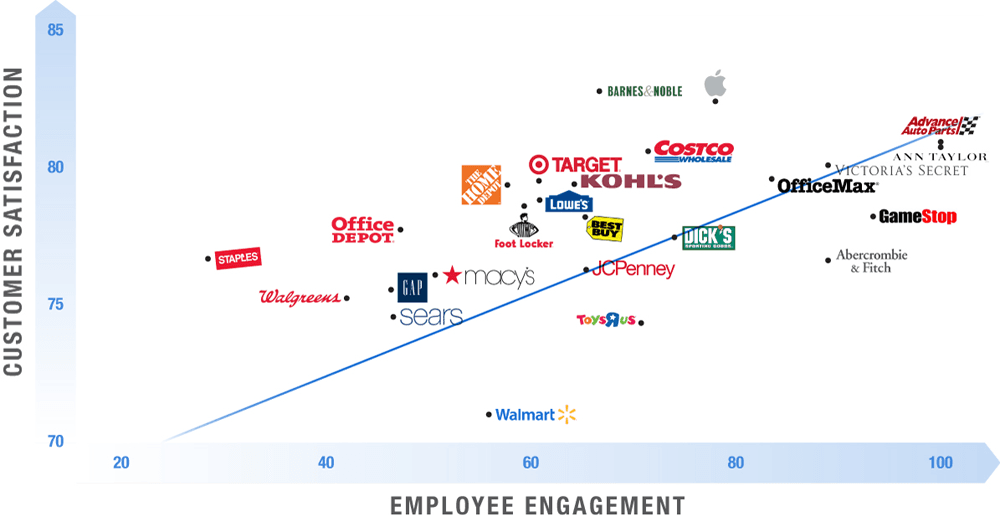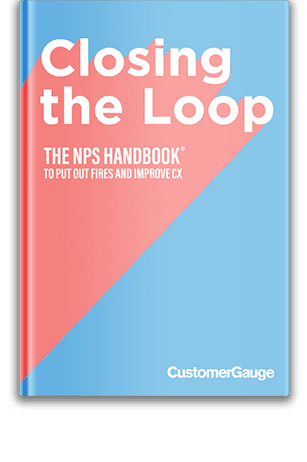How NPS® Helped LEGO® From Going Bankrupt
by Ian Luck
Can you imagine that a beloved brand like LEGO® nearly went bankrupt almost a decade ago? Up until 2004, the toymaker focused a lot of its attention on initiatives that stretched too far beyond its core brick products, thus losing sight on what mattered the most - whether customers were satisfied with the brand. The company relied only on annual surveys to measure its brand appeal, which were deceptively positive.
As a result, Lego found it hard to understand why kids were not buying new sets of their toys. Expanding to theme parks, clothing and television shows proved to be another costly distractions for the brand, and in 2004 LEGO’s profits dropped significantly.
How did LEGO go on the path to recovery? By focusing back on its core customers, listening to and acting on customer feedback, and ensuring high employee satisfaction. Let’s explore each one of these initiatives that were instrumental in LEGO’s recovery.
1. Put Focus Back On Core Customers
As mentioned above, LEGO has gone astray as a company by focusing too much of its initiatives on expansion, rather than paying attention to its core customers’ needs. The road to recovery came by introducing the Net Promoter Score® system in 2005. Prior to NPS, LEGO relied on annual surveys to understand brand appeal, which were not helping the company understand why sales are down.
The introduction of new LEGO products was also driven solely from the intuition of the brand's team of engineers and designers, not from what children wanted.
In an interview by Bain & Company, Conny Kalcher, Vice-president of marketing and consumer experiences for LEGO says:
“There was solid evidence that we weren’t hitting it with kids,”
“We had to get back to innovation based on what kids wanted.”
Since 2005, LEGO started collecting consistent stream of Net Promoter feedback to find out the reasons behind customer dissatisfaction. As a result, the company was able to make critical improvement decisions early in the process and meet customer expectations.
Conny Kalcher, vice-president of marketing and consumer experiences stated:
“If you want to be a premium brand you have to keep demonstrating that you are listening. Never become too big, or too arrogant, because the moment you do, the consumer moves away from you.”
LEGO also now collects NPS at every customer touchpoint - shops, online, consumer services, etc.
A touchpoint is a point at which a person comes into contact with your company / brand / product / service. By collecting customer feedback at every touchpoint, LEGO ensures it delivers a consistently exceptional experience wherever customers interact with the brand. However, the power of the Net Promoter Score lies in taking action on customer feedback. Read below to find out how LEGO drives quick business results by acting on NPS.
2. Follow Up & Act on Customer Feedback
LEGO does not only listen to customer feedback through NPS, it also does a great job acting on it. The toymaker distributes the scores throughout the company every month and empowers employees to follow up with detractors.
Conny Kalcher shares that LEGO has an established action plan when it comes to detractors. All negative feedback and comments are sent directly to branch managers who have to respond to detractors within the same day. LEGO has been able to address a low NPS feedback in as little as 24 minutes. The company also does a great job turning detractors to passives or promoters once they call their contact centre, by assuring them LEGO will immediately ship free bricks to their address.
The results of acting on customer feedback and following up with detractors is quite exceptional as well. Conny Kalcher shares:
Sales go up by 20% when a detractor is turned to passive satisfied
Sales go up 26% when passive satisfied is turned to a promoter
3. Introduce eNPS
LEGO realises that the success of its business hinges on the people who work for the company and interact with customers. That is why the toymaker makes sure its employees are inspired by LEGO’s purpose and engaged in the company’s strategy. To achieve this, LEGO conducts an annual survey to better understand what makes employees motivated to work for LEGO. The Employee Net Promoter Score (eNPS) is a single question in the survey LEGO sends to employees, measuring the degree employees are willing to recommend the LEGO as an employer.
With eNPS the brand puts as equal emphasis on Voice of the Employee (VoE) as Voice of the Customer (VoC or customer feedback). Research by Forrester has proven that robust VoE programs increase employee engagement, which in turn is correlated to customer satisfaction. Furthermore, a study by ForeSee shows that employee engagement has a direct, positive effect on customer satisfaction for two dozen of the top global retail brands (See image below).
Before sending the survey, LEGO makes sure it sets a specific target it wants to achieve with eNPS. For example, for 2014 LEGO set an NPS target of 62, compared to an international benchmark of a -12. Following the completion of the eNPS survey for 2014, the company discovered it achieved a score of 45, which was lower than its target, but still higher compared to the international benchmark. What is more, LEGO does not only benchmark itself to its specific industry, but to the eNPS scores it has achieved the years before. In this way, LEGO further utilises the power of NPS - reflecting on the score and actively working on improving it.

Key Takeaways
We hope LEGO's story has served as a great example on applying best practices for business recovery. The Danish toymaker experienced a rough year in 2005 when it nearly went bankrupt after losing sight of what mattered most in the business - customer satisfaction. LEGO's road to recovery began with the introduction of the Net Promoter System. NPS helped the brand meet its core customers' needs and expectations, as well as understand what drives dissatisfaction.
Collecting customer feedback at every touchpoint, helped LEGO ensure it delivers a consistently exceptional experience wherever customers interact with the brand. More importantly, the toymaker made sure it has a well established action plan when it comes to closing the loop with detractors. Following up on negative customer feedback helped LEGO turn detractors to passives or promoters, and see an immediate impact on sales. Finally, the introduction of eNPS enabled the brand track employee satisfaction with LEGO, which is highly correlated to customer experience.
As we learned in this article, one of LEGO's road to recovery steps was ensuring it closes the loop following a customer feedback survey. If you want to learn how to apply best practices on closing the loop with your customers, make sure you download the eBook below.
Blog Home









